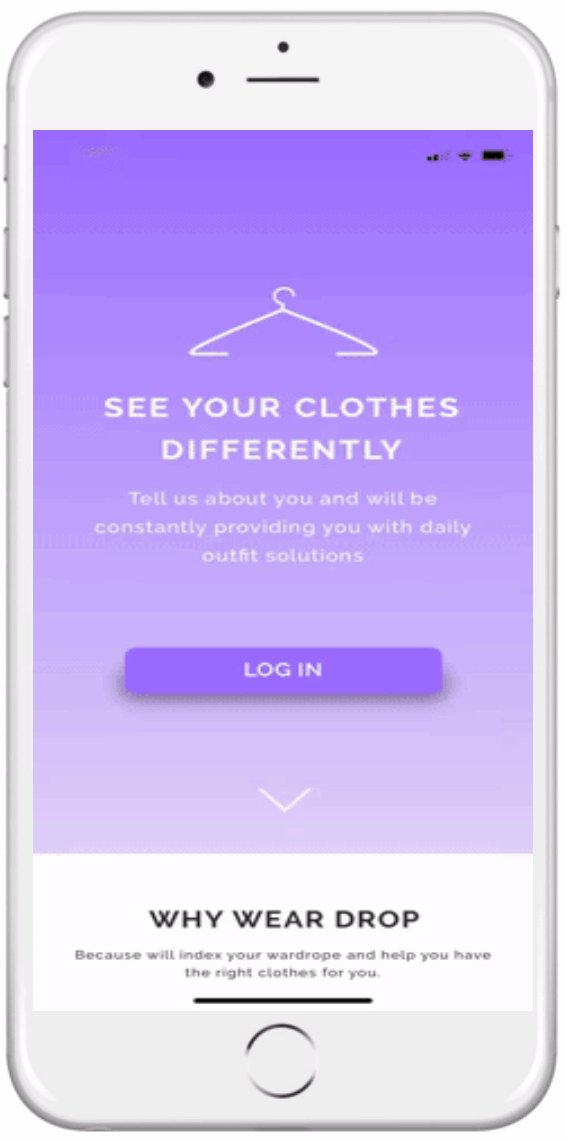

This is a project I worked on for my first year of my MSc and it was inspired by my own need of having an easier way to match my clothes for my daily needs but also when travelling.
Product Design
User research, prototyping, UI Design
Qualitative and Quantitative data
Marvel/Sketch prototypes
Sketches, low and high-fidelity prototypes
Project presentation

Choosing the right outfits for the day or an upcoming trip can be a stressful experience especially when you need to spend time and effort in finding out the weather conditions, your appointments during the day and most importantly to know what suits you or what makes you more confident or happier. I worked on a solution to this problem, but at the same time trying to find a way to shape the consuming behaviour and persuade people to a more sustainable way of buying or preserving their existing clothes by learning how to mend them or use the optimum combinations of their existing items.
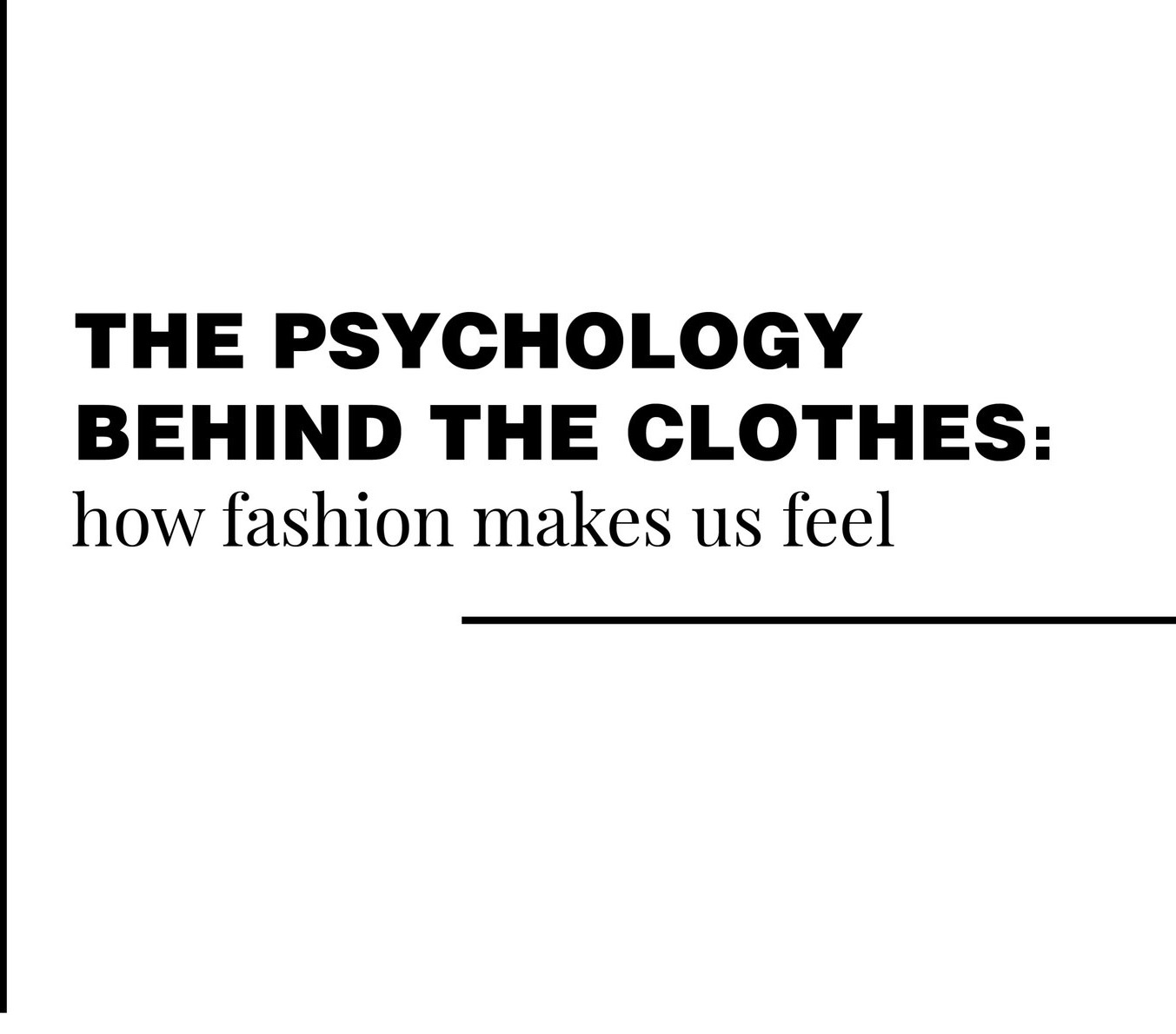
The challenge was to educate people to consume clothes in a more sustainable way while helping them to discover the optimum possible combinations by combining their existing clothes according to the event they needed to attend and also make them feel confident and happy with the proposed choices.

I started researching about how other people are choosing their clothes and found interesting facts about human behavior when it comes to clothing, how clothes affect our self-esteem, our social status, our mood and how bad is the clothing industry in destroying the environment. I read relevant literature about the psychology of clothing in order to understand about it and get ready for research with users.

I organized a focus group talking about the process of choosing clothes trying to understand the mental model of how users choose their clothes, how much time it takes, and which are the variables that drive their decisions. Interviews with the participants followed the focus group.

What I found from research is that participants mentioned the above variables a lot, as the main reasons for deciding what to wear, but what drew my attention was that almost everyone, and especially female participants, were mentioning “mood” as a factor. I decided to base my project on this idea and differentiate from the existing products.

In terms of the environmental effect, fashion is the second largest polluter in the world. Textile factories throw their waste in the water, the water consumption to make a pair of jeans is enormous, the amount of micro-fibers released in the sea every time we are washing a synthetic cloth are enormous.
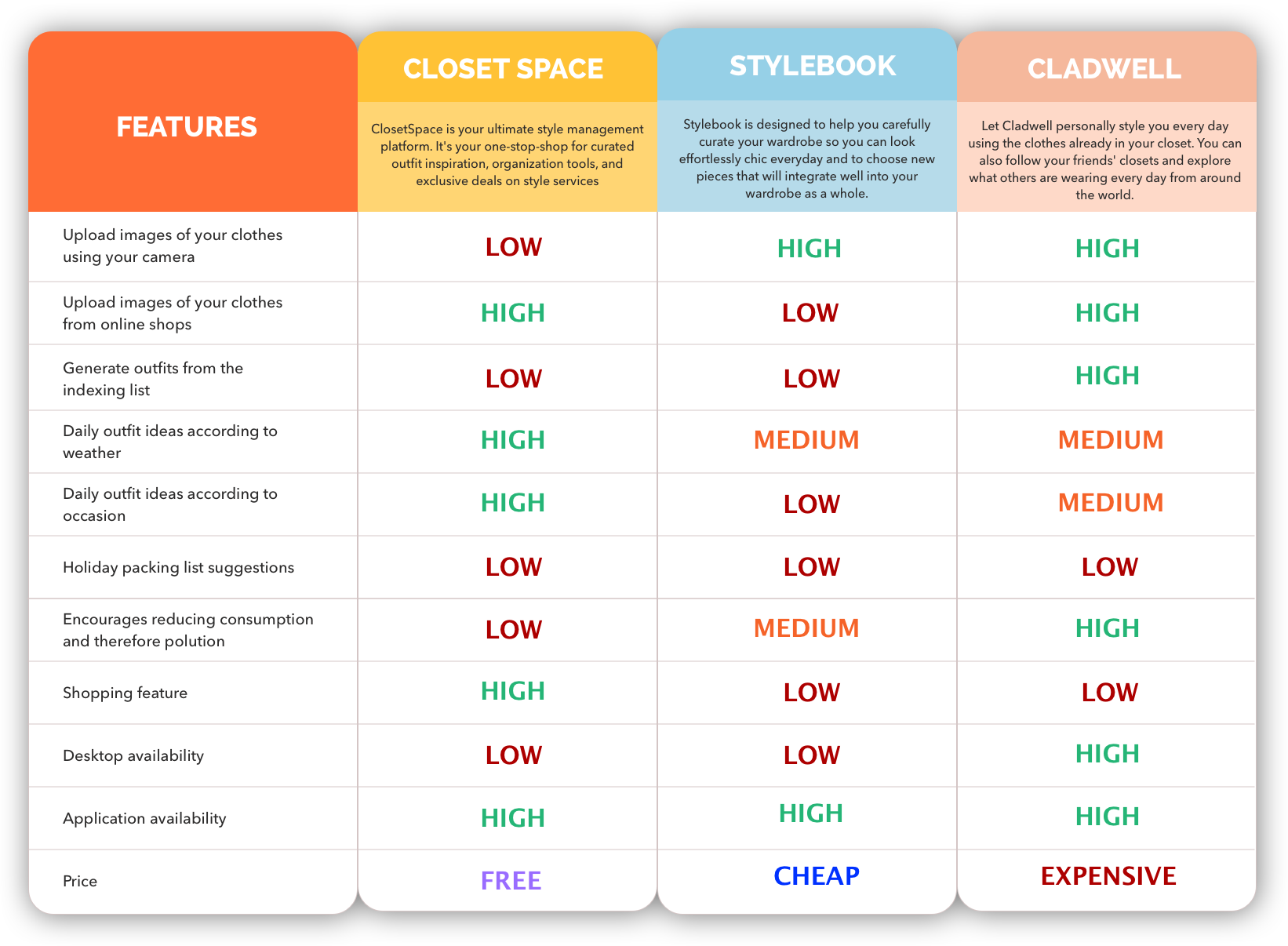
I completed research by doing a competitive analysis and trying to understand the innovation space for my idea and what I could possibly offer more to the users and the market.

Thinking about analogies from nature, Darwin's theory of sexual selection using as an example the peacock and the peahen. Peacocks use their plumage according to their mood to attract peahens. "We must suppose that peahens admire the peacock's tail, as much as we do", he wrote.
Based on the problem statements that arise from analysis I sketched a few crazy ideas. One of them stood out as a possible idea that could be used to start designing a solution. "Magic mirror in my hand, who is the fairest in the land?
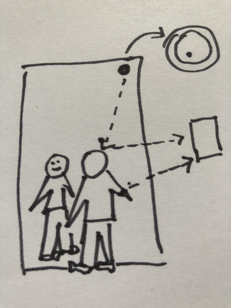
The "Textile Mirror"is a prototype made of industrial felt interlaced with Nitinol wire and shifting its structure upon receiving emotional signals from its viewers. Similar work is the “Conceptual Fashion” by Ying Gao and the “Kukkia and Vilcas” by Berzowska and Coehlo. They introduced the notion of kinetic garments and how they change shape according to the emotions of the persons that is wearing them. The project mapped emotions to patterns and textiles. Some textiles producing anger and stress whereas others were making people happy, calming and neutral.
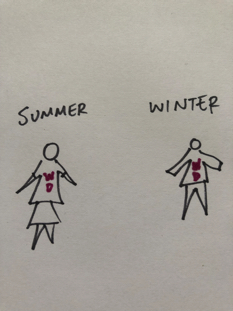
When people try clothes on, that’s the moment where emotions are heightened. This is the prefect time to measure and capture useful data. A micro camera is tucked in the top corner of a mirror at home. The user is checking himself after having dressed according to the application’s recommendations. The camera captures the expressions and sends them to a server. At the same time a smart watch is sending physical data to a server. There is a cross check between the two sets of data. Expressions are analysed into emotions using an algorithm and they are paired
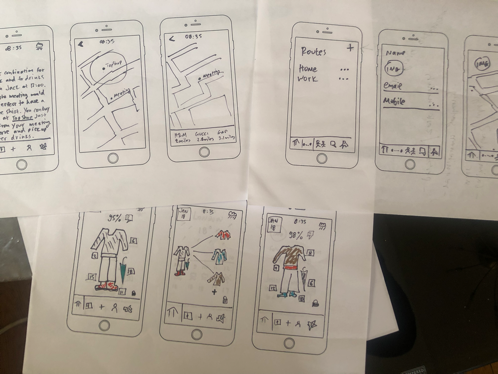

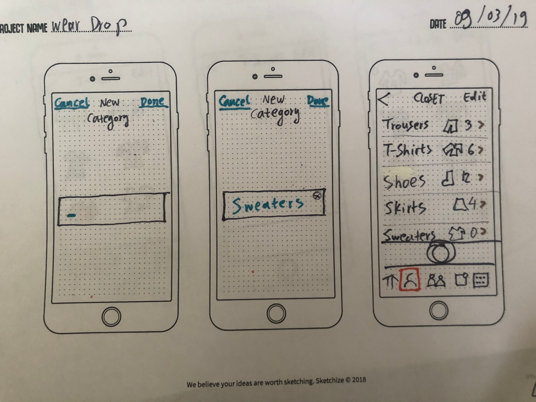
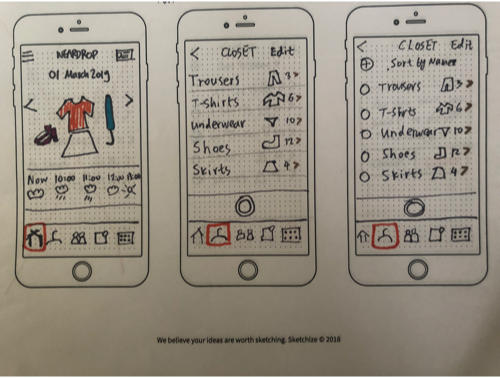
At the first testing stage I used the MarvelApp prototype to test some basic flows. I initially wanted to investigate if my design was fitting the mental model of my users, how easy was for them to navigate and find out areas for improvement for the next prototype.
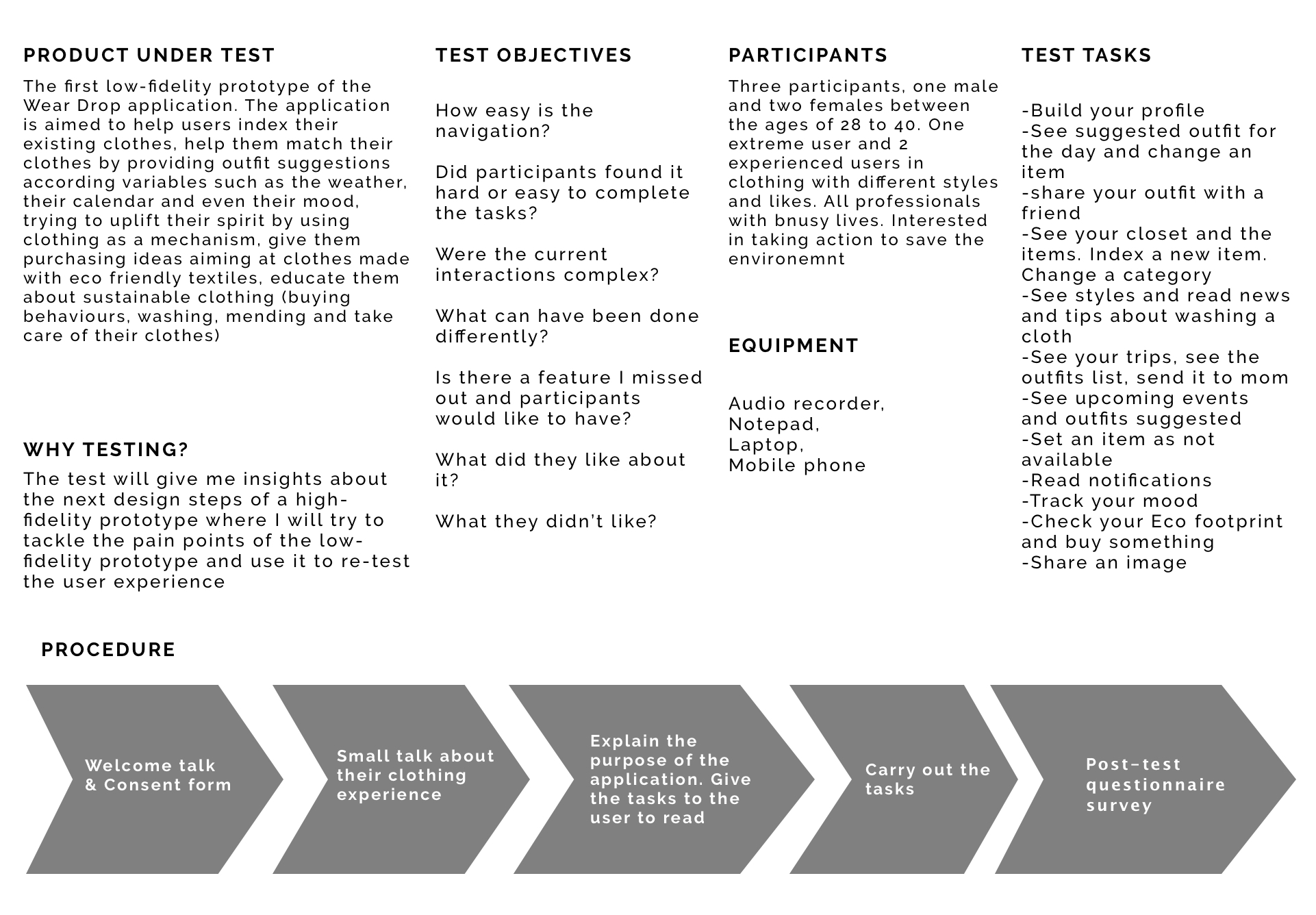
Based on the testing results I went back into prototyping a mid/high-fidelity prototype in Sketch, using the first prototype as a guide but redesigning the flows and the architecture.